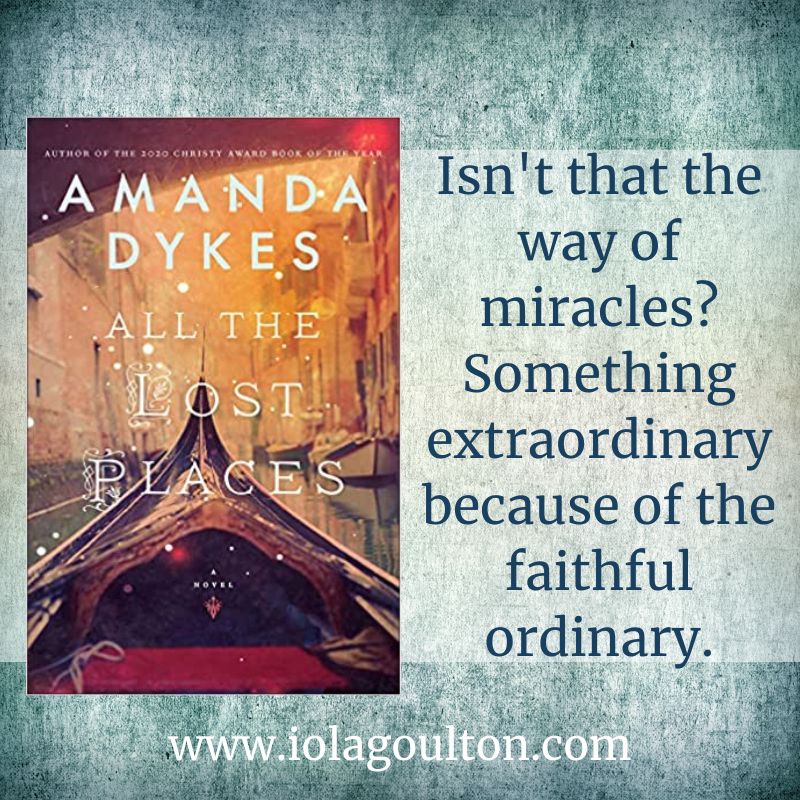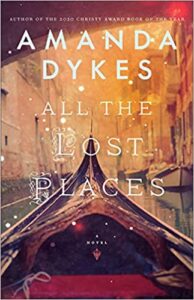All the Lost Places is a dual timeline novel made more complex by the fact the past timeline (1807) is partly quotes from a series of children’s books and partly narrative, with a very blurred line between what is part of the fictional stories and what is part of this story.
In the past timeline, baby Sebastien is rescued from the canals of Venice and raised by a ragtag bunch of adults – a lacemaker, a glassblower, a fisherman, and a printer. But Sebastien longs to knjow who he is.
In the more recent timeline (1907), Daniel Goodman knjows exactly who he is: a convicted theif who has served his prison sentence and now wants to make right with all his victims, including his mother. He takes a job as an artist and translator, which sends him to Venice, Italy, to draw the buildings and find and translate the final volume of a series of stories. The reader joins Daniel in his journey to sort fact from fiction as he translates the books and searches for the missing ending.
I loved the setting. The author brings Venice to life, skillfully mixing the story with the city’s history in an ongoing mix of literal and figurative, a literary writing style that felt more lyrical than most novels I read.
Unfortunately, I found the writing style and the complexity of the plot affected my appreciation of the story. I sometimes found myself losing the story and having to flick back a few pages to remind myself of what was supposed to be happening.
I do read fast, so perhaps that’s on me rather than on the book. My conclusion is that All the Lost Places is a book to read slowly and carefully, not one to rush through in an effort to find out whodunit or will the guy get the girl.
Recommended for readers looking for novels with international settings, and for fans of Rachel McMillan, Nicole Deese, and other authors who write rich prose in a literary style.
Thanks to Bethany House and NetGalley for providing a free ebook for review.



